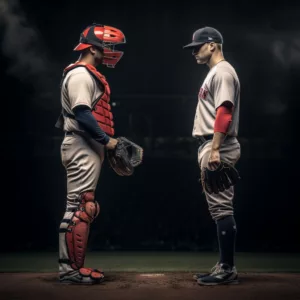 Looking for the Little League Pitcher Catcher Rules? This is a comprehensive guide to help you!
Looking for the Little League Pitcher Catcher Rules? This is a comprehensive guide to help you!
The pitcher is frequently referred to be the team's backbone because they are accountable for delivering precise pitches to challenge opposing batters. Pitchers use powerful throws and intelligent pitch selection to prevent rival teams from scoring runs. To keep the batters off balance, they must have outstanding control, precision, and the ability to vary speeds. Catchers, on the other hand, play an important role not only in receiving pitches but also in controlling the game behind the plate. They must have a strong knowledge of the game, be able to foresee plays, and successfully communicate with the pitcher using a system of signs and signals. Catchers are also responsible for protecting against base stealers, making plays at the plate, and assisting the pitcher in critical moments. The pitcher and catcher make a powerful tandem that is critical to the team's overall success.
Little League baseball has particular rules and standards for pitchers and catchers to ensure fair play and a level playing field. These regulations control different facets of the game, like pitch counts, defensive methods, and pitcher-catcher relations. Following these regulations not only fosters good sportsmanship but also assures the participants' safety. We will delve into the complexities of the minor league pitcher-catcher regulations throughout this comprehensive guide, providing you with a thorough understanding of their duties, responsibilities, and the laws they must follow. This book will provide you with the knowledge you need to grasp the significance of the pitcher and catcher positions in Little League baseball, whether you're a player, coach, or ardent fan.
The Importance of Little League Pitcher Catcher Rules
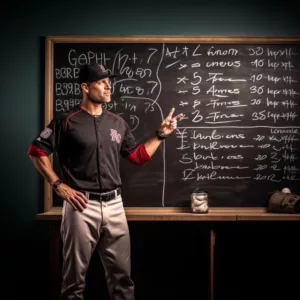 The pitcher catcher rules in little league play an important part in assuring fair play, safety, and an enjoyable game for both players and spectators. These rules are intended to keep the playing field level and to give a framework for the pitcher and catcher to work within. Following these guidelines fosters good sportsmanship and helps young players develop their skills while also protecting them from potential harm.
The pitcher catcher rules in little league play an important part in assuring fair play, safety, and an enjoyable game for both players and spectators. These rules are intended to keep the playing field level and to give a framework for the pitcher and catcher to work within. Following these guidelines fosters good sportsmanship and helps young players develop their skills while also protecting them from potential harm.
Eligibility and Minimum Age
To participate in Little League as a pitcher or catcher, players must meet specific eligibility and age requirements. Little League is often divided into age levels, such as Tee-Ball, Minor League, and Major League. The particular age restrictions may vary according to the local league's bylaws, but generally, pitchers and catchers must be between the ages of 9 and 12.
Protective Equipment for Little League Pitcher Catcher Rules
In Little League baseball, player safety is of the utmost importance. To reduce the danger of injury, both the pitcher and catcher must wear suitable protective gear. This includes the following:
- Pitcher: Some leagues may require a helmet, a protective faceguard, and a chest protector for the pitcher.
- Catcher: A helmet, mask, chest protection, shin guards, and a protective cup are usually required for the catcher.
This protective equipment shields players from line drives, foul balls, and crashes at home plate.
Pitching Rules
Pitching is a crucial component of baseball, and the pitcher's actions are governed by specific rules in Little League. Pitchers must follow the following rules in Little League:
- Pitch Count: To protect young arms from overuse, Little League has tight pitch count limits. The pitch count limit varies by age group and the number of days of rest required before a pitcher can return to the mound.
- Balk Rule: Pitchers must also be aware of the balk rule, which restricts certain deceptive actions designed to fool baserunners.
- Windup and Set Positions: Pitchers in Little League can select between a windup and a set position, each with its own set of rules and restrictions.
Pitchers must understand and follow these regulations to ensure fair play and avoid fines.
Catching Procedures for Little League Pitcher Catcher Rules
The catcher's duty is equally vital, and they must adhere to strict guidelines in order to do their job well. Catchers in Little League must follow the following rules:
- Catching Stance: The catcher must stand with their feet shoulder-width apart and their knees slightly bent.
- Blocking the Plate: Catchers may block the plate when attempting to make a play, but they must first take possession of the ball before hindering the runner's path.
- Throwing to Bases: The catcher plays an important part in defending against baserunners by throwing to bases in order to catch them stealing or to pick up wandering runners.
Interactions and Signals
Effective communication between the pitcher and catcher is critical for on-field performance. Pitchers and catchers build a signal and sign repertoire to communicate throwing tactics, pitch types, and defensive plays. Hand signs, gestures, and verbal cues are commonly used to transmit these signals. The ability to effectively comprehend and execute these signals is important for the pitcher and catcher to work together smoothly.
Defensive Strategies
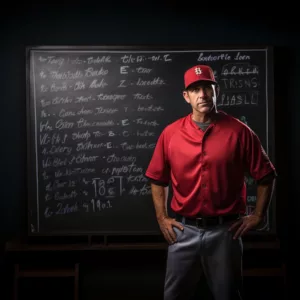 Pitchers and catchers must also be knowledgeable about the various defensive methods used in Little League baseball. Knowing when and how to field bunts, cover bases, and make plays on pop-ups and foul balls is part of this. To effectively contribute to their team's defensive efforts, the pitcher and catcher must be able to assess the game situation, predict plays, and make split-second judgments.
Pitchers and catchers must also be knowledgeable about the various defensive methods used in Little League baseball. Knowing when and how to field bunts, cover bases, and make plays on pop-ups and foul balls is part of this. To effectively contribute to their team's defensive efforts, the pitcher and catcher must be able to assess the game situation, predict plays, and make split-second judgments.
Common Errors to Avoid
Certain typical errors should be avoided when playing pitcher and catcher. These are some examples:
- Lack of Communication: Miscommunication and blunders on the field might result from a failure to communicate effectively.
- Inconsistent Mechanics: Pitchers must maintain consistent mechanics in order to avoid tipping off pitches to the other team.
- Improper Footwork: To enhance accuracy and reduce stolen bases, catchers must guarantee proper footwork before throwing to bases.
Recognizing these typical errors and actively striving to better can dramatically improve a pitcher's or catcher's effectiveness.
The Role of the Umpire
Umpires play an important role in enforcing the pitcher-catcher regulations and ensuring fair play. Umpires oversee the pitcher's actions to verify that the rules governing balks, pitch count, and placement are followed. They also watch the catcher's performance, especially when it comes to blocking the plate and throwing to bases. Umpires provide timely decisions, provide guidance, and contribute to the game's general integrity.
Frequently Asked Questions: Little League Pitcher Catcher Rules
- Is it possible for a pitcher and catcher to switch places during a game?
Pitchers and catchers can, in fact, interchange positions throughout a game. The laws governing such switches, however, may differ based on the league and age level. Coaches and supervisors typically decide when and how these position changes can take place. - What if the pitcher throws four balls in a row?
If the pitcher pitches four balls, the batter is walked and advances to first base. If there are any runners on base, the runners progress appropriately. - Is it possible for the catcher to block the plate without the ball?
No, the catcher is not permitted to obstruct the plate if the ball is not in his possession. Obstruction is deemed blocking the plate without the ball and can result in penalties. - Are there any constraints on the pitcher's pick-off attempts?
Pick-off attempts are subject to strict rules in Little League. Pitchers may try pick-offs, but they must follow the rules about balks and keeping a legal pitching position. - Is the catcher capable of making a play at any base?
Yes, the catcher may make a play at any base. Catchers, on the other hand, must assess the game scenario and use sound judgment when deciding whether to throw to a base. - What is the Little League Balk rule?
In Little League, the Balk rule prohibits pitchers from using misleading actions that could lead to baserunners being misled. If a pitcher balks, any baserunners are granted an extra base.
Explore the 3X Pitching Velocity Program and the 2X Sub 2.0 Velocity Program
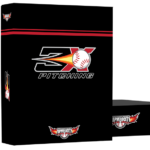 Investigate the 3X Pitching Velocity Program as well as the 2X Sub 2.0 Velocity Program.To summarize, understanding and following to the minor league pitcher catcher regulations is critical for the success and growth of young baseball players. By adhering to these guidelines, athletes can not only help their team win, but also secure their personal safety on the field. To enhance their performance, the pitcher and catcher must operate flawlessly together, completing pitches, protecting against base runners, and communicating efficiently.
Investigate the 3X Pitching Velocity Program as well as the 2X Sub 2.0 Velocity Program.To summarize, understanding and following to the minor league pitcher catcher regulations is critical for the success and growth of young baseball players. By adhering to these guidelines, athletes can not only help their team win, but also secure their personal safety on the field. To enhance their performance, the pitcher and catcher must operate flawlessly together, completing pitches, protecting against base runners, and communicating efficiently.
If you want to improve your pitching skills or learn more about throwing safely, I recommend you look into the 3X Pitching Velocity Program. This program emphasizes throwing velocity enhancement through good mechanics, strength training, and conditioning strategies. It offers excellent ideas and training strategies to assist pitchers improve their game.
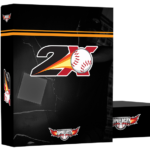 Catchers can also benefit from the 2X Sub 2.0 Velocity Program. This training is specifically designed to help catchers increase their throwing velocity and accuracy. Catchers can improve their defensive skills and become more effective at throwing out base runners by focusing on good footwork, arm mechanics, and strength development.
Catchers can also benefit from the 2X Sub 2.0 Velocity Program. This training is specifically designed to help catchers increase their throwing velocity and accuracy. Catchers can improve their defensive skills and become more effective at throwing out base runners by focusing on good footwork, arm mechanics, and strength development.
Pitchers and catchers can obtain vital knowledge and training by investing in these programs, which will contribute to their overall success and development in the game of baseball. So, don't delay in researching the 3X Pitching Velocity Program or the 2X Sub 2.0 Velocity Program to take the next step in your journey to become a great pitcher or catcher.


When did they change the rule about a pitcher age 9-12 bulking in minor or major little league ?
Are there balks in little league baseball minor or majors